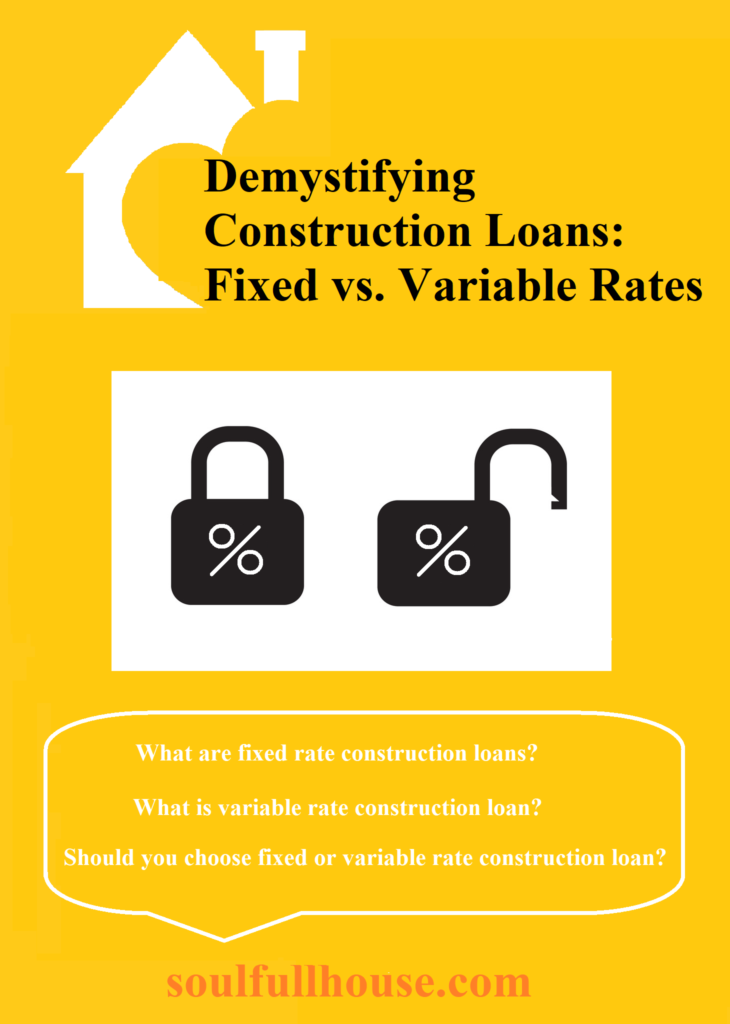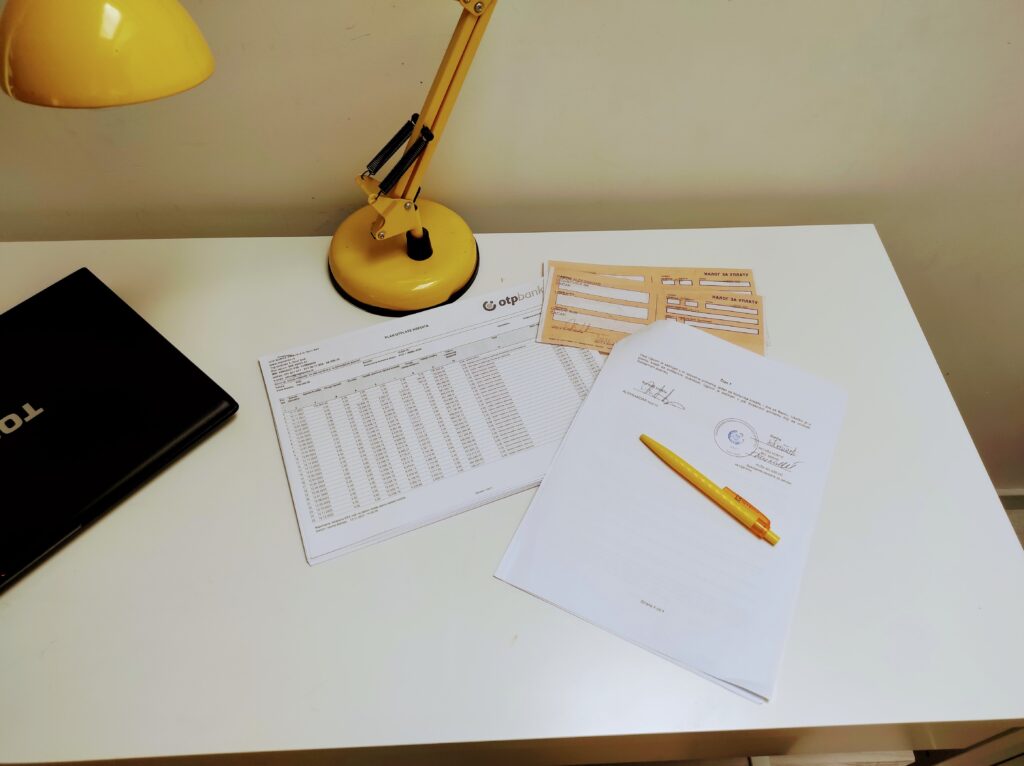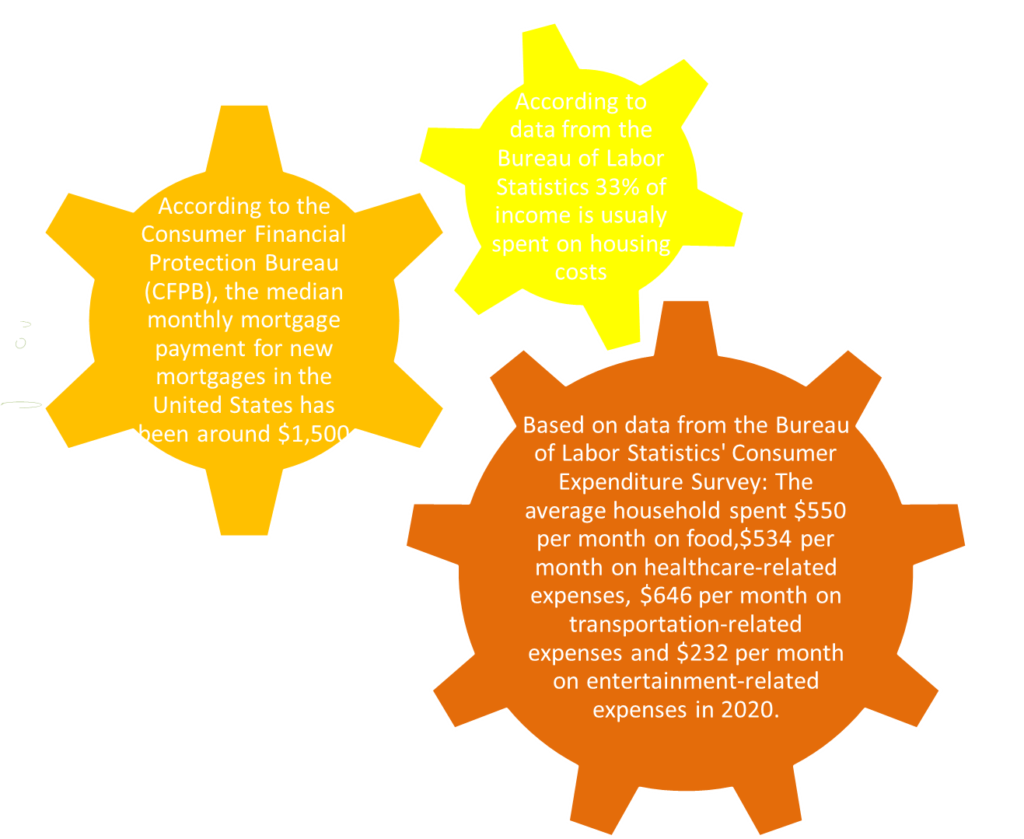Construction loans, whether fixed or variable interest rate, are a type of financing that are specifically designed for individuals or businesses looking to build or renovate a property. The purpose of a construction loan is to provide funding for the various stages of the construction process. The construction loan process typically involves several steps. First, the borrower applies for the loan and provides documentation such as building plans, cost estimates, and financial statements.

Once approved, the lender will provide the borrower with a loan commitment that outlines the terms and conditions of the loan. As the construction process begins, the lender will disburse funds in stages to cover the costs of each phase of the project. This is known as a draw schedule. The borrower will typically be required to make interest-only payments during the construction period, and then begin making regular payments on the loan once the project is complete.

What are fixed rate construction loans?
A fixed-rate construction loan is a type of financing that allows borrowers to lock in a specific interest rate for the duration of the loan. This means that regardless of any changes in the market or economic conditions, the borrower’s interest rate will remain the same throughout the construction process.
The advantage of a fixed-rate construction loan is that it provides borrowers with predictable payments. With a fixed interest rate, borrowers can easily budget for their loan payments and avoid any unexpected increases in due to market disturbances.
However, there are also some disadvantages to fixed-rate construction loans. One of the main disadvantages is that borrowers typically end up paying a higher amount at the end because the initial interest rates are higher and the repayment periods of these loans are shorter. Additionally, fixed-rate construction loans may have stricter qualification requirements.
One exception is construction-to-permanent loan. Because it usually has long repayment duration, a fixed installment is not only a safer and more predictable alternative for the borrower, but it is also more financially advantageous.
FAQ
- Are fixed rate construction loans better than variable rate construction loans?
Yes, if the repayment duration is long or market prospects are unstable.
- What are the typical terms for fixed rate construction loans?
Repayment schedule: interest-only payments during the construction phase and then switch to principal and interest payments once the construction is complete.
Loan-to-value ratio: lower compared to traditional mortgages.
Down payment: 20%.
Fees: origination fees, appraisal fees, and other fees associated with the loan.
- Can I refinance a fixed rate construction loan?
Some construction loan agreements may have prepayment penalties or restrictions on refinancing before the completion of the construction phase. Additionally, lenders may have different requirements for refinancing a construction loan compared to a traditional mortgage, such as requiring a higher credit score or equity in the property.

What is variable rate construction loan?
A variable rate construction loan, also known as an adjustable-rate construction loan, is a type of financing that allows borrowers to have an interest rate that can fluctuate over the course of the loan term. The interest rate is usually tied to an index such as the prime rate, and it can change as market conditions change.
The advantage of a variable rate construction loan is that borrowers initially receive a lower interest rate compared to a fixed-rate loan. This can make the loan more affordable in the early stages of the project, which may be especially beneficial if the borrower is facing higher initial costs.
However, there are also some disadvantages to variable rate construction loans. One of the main disadvantages is that borrowers may end up paying more in interest over the course of the loan term if interest rates rise. Additionally, variable rate loans can be less predictable and may be more difficult for borrowers to budget for. This especially applies to medium and long-term credit loans.
FAQ
- Are variable rate construction loans riskier than fixed rate construction loans?
In essence, they are. However, given that the common repayment duration for such loans is two years, the risk is rather low.
- What are the typical terms for variable rate construction loans?
Variable rate construction loans have the same terms like fixed rate construction loans, with one key difference due to the variable interest rate.
- Can I refinance a variable rate construction loan?
Yes, it is possible, but the process and terms may be different than refinancing a traditional mortgage as we explained with a fixed rate construction loan.
Should you choose fixed or variable rate construction loan?
As a general rule, fixed rate construction loans should probably be better option for medium and long-term credits such as construction-to-permanent loan, while for short-term loans, such as most construction loans, variable interest rate is still better. To this general rule, it should be emphasized that worldwide market trends must constantly be considered. Following the poor performance of the previous year, a further difficult market situation can be expected in 2023, with no clear indicators of the crisis’ resolution. There will be an increase in reference interest rates as well as a fight against inflation. Taking all that into account, at this point it seems that fixed interest rates, although higher, are an overall better option in 2023, for all types of loans.
In the summer of 2008, I took out a 20-year loan to build my first house. I chose a fixed interest because, while the monthly payment was slightly higher, I believed it would be a more advantageous alternative in the long term. I couldn’t be more wrong. Because of the subsequent global economic crisis, the central bank cut the reference interest rate, so loan payments that were not fixed over time became increasingly favorable in comparison to the one I was paying.
In conclusion, fixed-rate and variable rate construction loans are two options for borrowers who are looking for financing to build a property. While both have their advantages and disadvantages, the choice ultimately depends on the borrower’s individual circumstances and the current market conditions. For borrowers seeking a long-term loan, such as a construction-to-permanent loan, a fixed-rate loan may be a better option due to its predictability and ability to budget for payments. However, for short-term loans, a variable rate loan may offer a lower initial interest rate, but with the risk of interest rate fluctuations over time. In 2023, due to market conditions, fixed interest rates are likely to be the better option for all types of loans. It is important for borrowers to carefully consider their options and consult with a financial professional to determine the best financing option for their specific needs.
